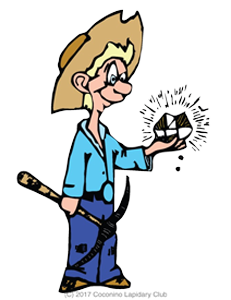We usually think of star sapphires and rubies as stones in the few carat range, not in hundreds and thousands of carats. But some are an amazing size. At the top, are the World’s Largest which are truly awesome. In this blog I’ll describe the worlds largest blue star sapphire, star ruby, and black star. . . Read More
Mineral Man Mel
Largest Star Sapphire/Ruby
Corundum – From Sapphires to Rubies
Gemstones of the mineral corundum [Ref 1] offer a rainbow of colors for the lapidarist and jewelry maker as displayed in Figure 1. Traditionally, of these, the ruby and blue sapphire, along with diamond and emerald, are considered to be the four-membered family of precious gems. Corundum gemstones, other than the ruby and blue sapphire,. . . Read More
Beryl Art Objects
In this blog beautiful art objects, carved and sculpted in crystals of the beryl gemstones, are presented. In some, the shape of the gemstone inspired the shape of the object. In others, the color of the object is enhanced by decorating with differently-colored gems. Ancient to modern art objects are presented. REFERENCES Ref 1. https://www.metmuseum.org/toah/works-of-art/25.78.90/ Ref. . . Read More
THE MINERAL BERYL, A MULTIPLEX OF GEMS
The beautiful blue hues of aquamarine, the rich yellows of heliodor, the deep green of emerald, the subtle pinks of morganite, the deep blue of the maxixe beryl, and the rich color of the red beryl (bixbite) span the rainbow, as shown in Figures 1 and 2. The beauty of these gemstones underlies their use. . . Read More
A Short History of Emeralds
The emerald is the chromium-containing variety of the mineral beryl [Ref 1]. Its’ beautiful, vibrant, deep green color has made it a great favorite among those that create beautiful jewelry and art works from it, gem & mineral collectors and those who wear it. Witness the Hooker Emerald, set with diamonds, in a brooch, seen. . . Read More
Star Sapphires & Rubies
The star gemstones of the corundum family are either star sapphires or rubies. Under light these gemstones exhibit asterism [Ref 1] in showing either a six rayed or twelve rayed star. The starred gems present a beautiful and novel appearance and are highly desired by artisans, those who wear them and collectors. In this blog I’ll briefly describe what. . . Read More
Diamonds IV
Lattice Defects, Impurities and Color As stated in references 17, 18 of my DIAMONDS II blog, impurity atoms and lattice vacancy defects are responsible for the coloration of diamonds [Ref 1]. A lattice vacancy (V) without a carbon atom in the diamond lattice which partners with one to four neighboring nitrogen atoms (N), in colored diamonds,. . . Read More
Diamonds III
A Gallery of Natural Diamond Crystals The gallery includes clear crystals and those exhibiting a range of colors (Figures 2-13), a range of shapes (Figures 2-15), examples of inclusions found in Diamonds (Figures 1-3), examples of shaping and etching by resorption (Figures 3-15), and examples of twinned diamonds (Figures-14,15). Well-developed crystal forms, typical of diamonds, are. . . Read More
Diamonds II
In this blog, my second on diamonds, I’ll discuss the physical and chemical properties of a diamond, then its optical properties in relation to its crystal structure and chemistry, and then their formation and associated geology. CRYSTAL STRUCTURE AND PROPERTIES OF DIAMOND To understand the physical properties of the diamond it’s important to understand its. . . Read More
Diamonds I
Having greatly enjoyed writing my last blogs on garnets as gemstones and mineral specimens, topics different from my long-time interests in the ore-forming minerals, I am starting a series of blogs in the same vein on the precious gems: diamonds, emeralds, rubies, and sapphires. In the first three blogs the topic is diamonds. In this first. . . Read More
